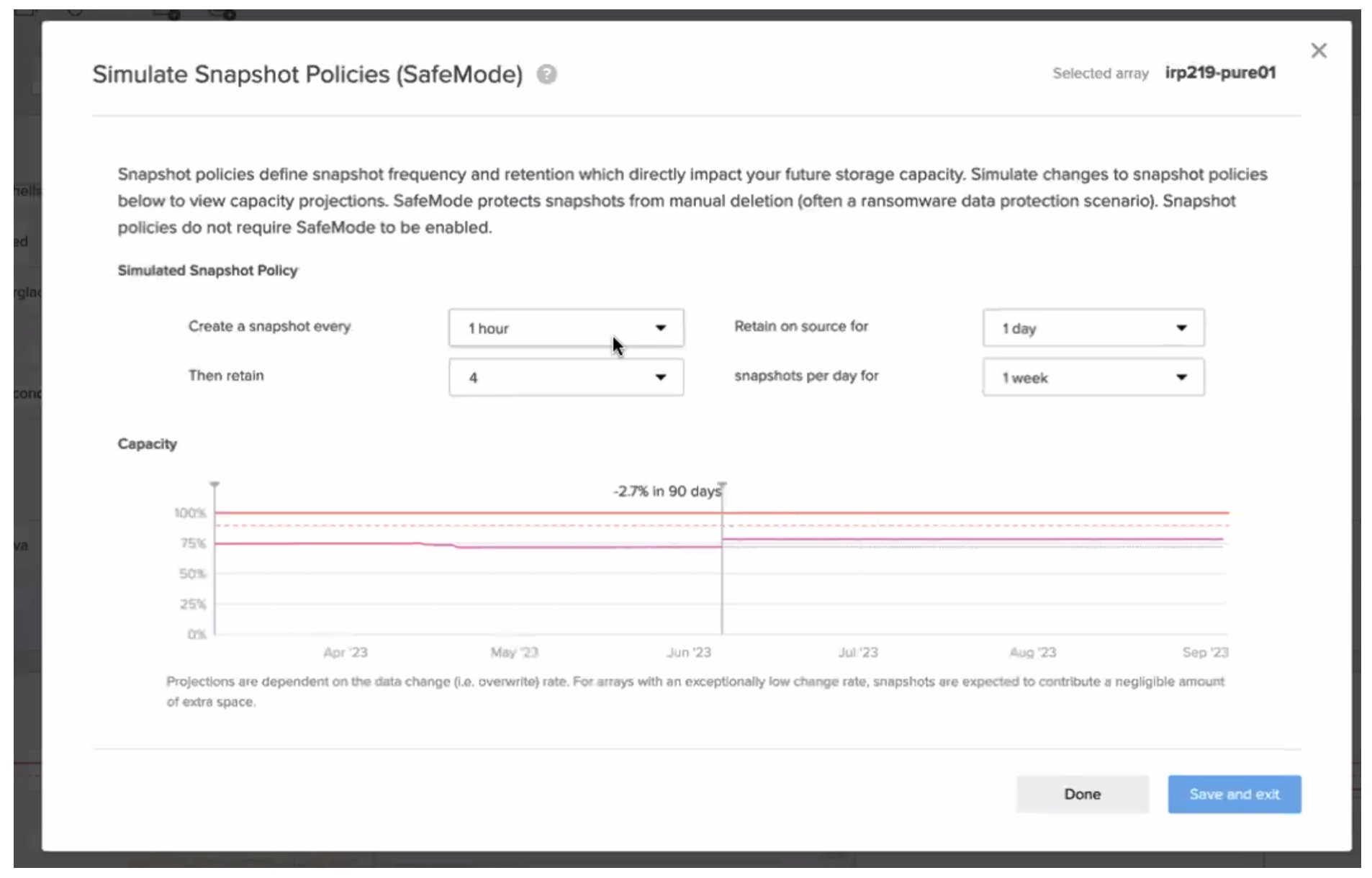Pure Storage announced two new offerings to their portfolio of services to bolster their product offerings: asynchronous replication with ActiveDR and FlashArray File Services.
ActiveDR
ActiveDR was designed to be simple and provide an easy failover and failback experience with just a click of a button. The offer is called “continuous replication”, and this solution offers near synchronous replication of data by pushing out writes as they occur. Pure states that this provides a “near-zero” recovery point objective. This is in contrast to their Purity ActiveCluster solution which consists of synchronous replication.
The Pod Structure
ActiveDR utilizes a pod structure for grouping data to be protected. The pods are designed to be a namespace, an IO control domain within ActiveCluster, and a consistency group. In the past, pods were stretched across clusters. With ActiveDR, pods can be linked for the first time. Volumes can also have the same name as long as they are in different pods. When pods are created on the production side, they are automatically created on the Disaster Recovery site with ActiveDR enabled. Disaster Recovery site volumes are also automatically resized to match the production volume sizing. All changes to the pods can be made without impacting the recovery point objective requirements.
ActiveDR Workflow
ActiveDR runs between two FlashArrays, with a connection between the arrays configured only once. This connection is a replica link that is compressed, pointed at the disaster recovery site, and can be reversed to point back at production. As pods are created on the production array, they are automatically created on the disaster recovery site. After the disaster recovery site volumes are created, they can be pre-mounted to the DR hosts to provide a faster failover scenario.
The target pods follow the writing occurring in the production pods and track the changes at the same time. This provides the near-zero RPO touted by Pure. The pods on the DR site are maintained as read-only until the time of activation. When a disaster occurs, the failover needs to be triggered manually, however, automation can be performed via APIs. The DR side pods are then promoted to active status and start processing reads and writes.
Final ActiveDR Thoughts
As with all Pure Storage releases, ActiveDR will require NO additional licensing. It will be included in the Purity 6 GA release and is part of the Evergreen Subscription model. And with the addition of any feature, you will encounter some additional overhead on the arrays. The guidance provided by Pure states (using some rough math) that if the array is less than 60% busy, then ActiveDR can be enabled without issue. It should also be noted that administrators can pick and choose which workloads to protect with ActiveDR, reducing the impact. Pure also calls out that small IO workloads are ideal for Active DR.
FlashArray File Services
In April 2019, Pure announced its acquisition of Compuverde. This acquisition has finally been integrated into Purity with the announcement of FlashArray File Services. Available in Purity 6, FlashArray File Services allows for Pure to present Block and File protocols consolidated on the storage array.
Features
Some of the features offered by FlashArray Files Services include:
- Multi-protocol, including SMB and NFS
- Directory level snapshots
- Directory level reporting metrics
- Global dedupe and compression
- A consolidated storage pool for both block and file storage protocols
FlashArray File Services also introduces Managed Directories. Managed Directories are the root of a file system and can be nested within each other. The current restriction in Purity 6.0 is 500 Managed Directories per array. Similar to other NAS clients, Managed Directories can have policies assigned to them and can have snapshots taken. In future releases, look for file quotas to be released. Management is performed in the Pure GUI but can also take place in the Command Line Interface or via REST APIs.
Conclusion
Once again, Pure Storage continues to improve its product portfolio. An easy to utilize and configure disaster recovery solution built into the existing storage platform provides even the most understaffed IT departments with the ability to protect their business and data.





